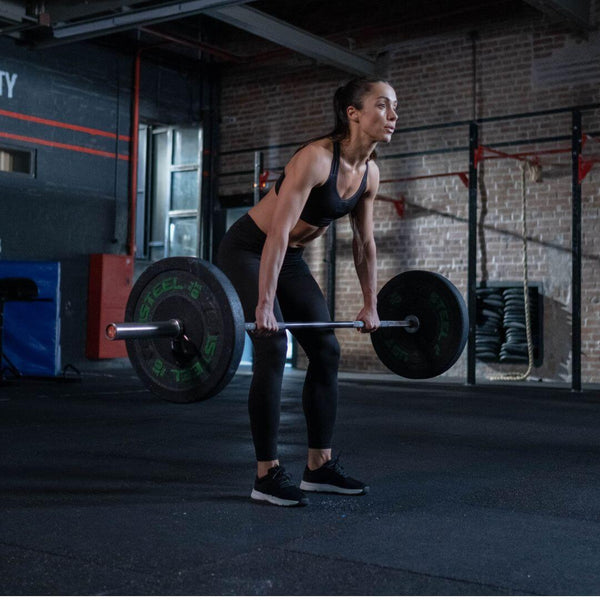
One of the best things about training for muscle growth is that there is no must-do exercise. Don’t let anyone tell you differently. You can build your legs without back squatting, your chest without benching, and your lats without lat pulldowns. That said, those are all excellent exercises. However, not all exercises are created equal. Some actually suck for muscle growth.
In this article, I will list the ten most overrated exercises. While I admit some subjectivity is involved, there is a method to my madness. A great muscle-building exercise must create high tension, have high progression potential, feel good, and most of all, the target muscle must be the limiting factor. An overrated exercise is simply a popular movement that falls short in one of those areas. I came up with ten. Do you agree? If not, let me know in the comments!
1: Front Squat
Oh man, this one is hard for me. I love the front squat. It’s easily one of my favorite exercises. The problem is that it’s overrated for lower-body muscle growth. Most people can’t perform the front squat well enough to use it as a muscle-building movement.
Don’t feel bad. The front squat is hard to do correctly. It requires exceptional mobility to get into a good front rack position (the cross-arm style is a problem), short femurs to stay upright, and a pain threshold to handle your collar bones getting crushed. If that’s not you, the front squat is a poor choice for growing your legs.
The front squat defenders will quickly point to a classic 2009 paper showing that muscle activation in front and back squats is similar despite subjects handling heavier loads on back squats.¹ I know because I have used this study to defend front squats in the past.
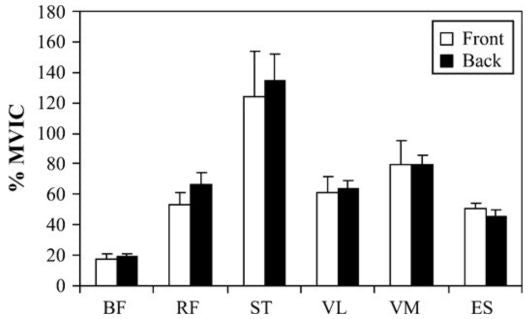
Figure 1: Gullett, Jonathan C, et.al. (2009)
Yes, this study indicates that the front squat can be a viable muscle-building movement if done correctly. However, even considering this, it’s still a limited exercise because most people can’t do it correctly. Unless you maintain perfect positioning, the upper back almost always fatigues before the legs do. There are too many more stable movements that are easier to perform that feel better.
What to do instead: Safety Squat Bar, Back Squat, Leg Press, Hack Squat, Smith Machine Squat, Belt Squat.
2: Upright Row
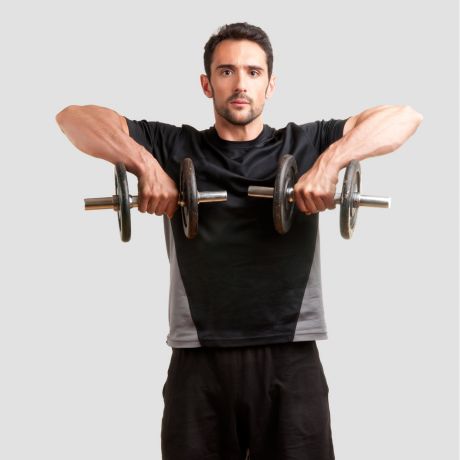
Next up is the upright row. What is the upright row good at? It kind of hits the lateral delts and the traps, but it’s a second-rate exercise for both muscles.
I get that we want some variation in our exercise selection. Doing the same exercises day in and day out can get boring. I guess that is the best argument for the upright row. However, plenty of exercises hit the lateral delts and the traps better. Plus, the upright row is uncomfortable for most people, myself included. And when I say uncomfortable, I mean it causes more shoulder pain than a subpar exercise is worth. I have a rule – don’t get hurt on an assistance exercise.
What to do instead: Dumbbell Shrug, Barbell Shrug, Smith Machine Shrug, Dumbbell Side Raise, Cable Side Raise, Machine Side Raise
3: Front Raise

The front raise is one exercise on the list that is a bit of a wildcard. It’s a fine exercise to grow the front delts. In fact, it meets the criteria of a good muscle-building exercise. The problem is that the front delts get plenty of work with shoulder and chest presses. For the most part, the front raise is redundant. There is no reason to do them if you already do shoulder presses.
It’s not a big surprise, but research shows that the dumbbell shoulder press creates more muscle activation in the anterior delt than front raises.²
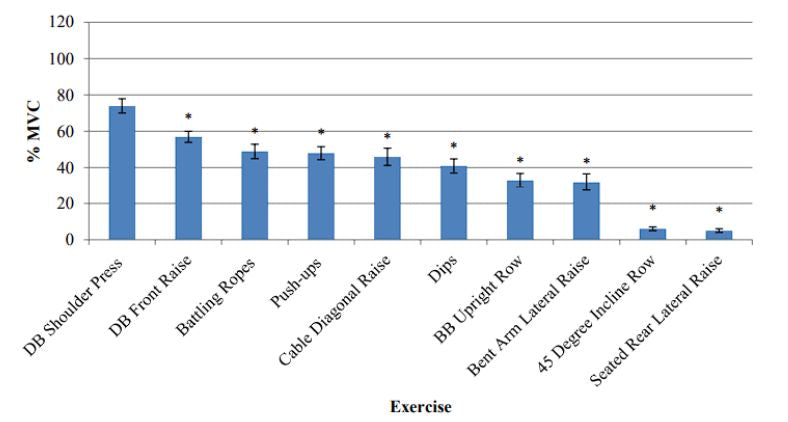
Figure 2: Sweeney, S.P. (2014)
A well-rounded shoulder routine should include a military press for the front delts, a lateral raise for the side delts, and a face pull or rear raise for the posterior delts. If you want more volume, add a second exercise for the lateral delts. If any shoulder area needs more attention, it’s the lateral delts. Plus, growing the side of your delts helps accentuate the coveted v-taper.
What to do instead: Overhead Barbell Press, Seated Barbell Press, Standing Dumbbell Press, Seated Dumbbell Press, Arnold Press
4: Barbell Row
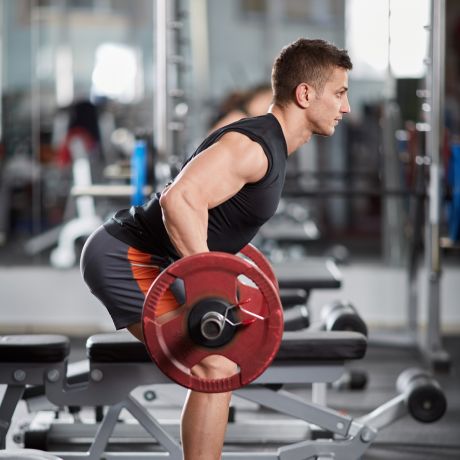
Okay, there’s a bit of controversy here. Yes, many people have built huge backs, prioritizing the barbell row. Some of the best bodybuilders of all time swear by them. Guys you know by their first names—Arnold, Dorian, Ronnie—all love the barbell row. I don’t care; they are overrated.
Here’s the deal: I have two problems with the barbell row. One, the lower back fatigues before the upper back does, and two, most people do it wrong.
A barbell row is essentially an isometric exercise for the lower back, which means your lower back has to fight to hold your upper torso in position while you row the weight. From a “functional” standpoint, this can be beneficial. However, it’s a limitation for growing your upper back.
Secondly, how often do you see a well-executed barbell row? I’m talking about maintaining a good position, using a full range of motion, no momentum, pulling with the lats, etc. I know it’s rare for me to see it.
Speaking of Dorian, there is a classic DVD of him training IFBB pro bodybuilder Mark Dugdale. It’s called “A week in the Dungeon.” I’m paraphrasing, but in the video, Dorian asks Dugdale how much weight he typically uses for barbell rows, to which he responds by saying around 405 pounds. Dorian laughs and instructs him to drop to 225 to ensure he controls the weight with his back. My point is that even pro bodybuilders need help maintaining good form on barbell rows.
What to do instead: Dumbbell Row, Seal Row, Chest Supported Row, Seated Cable Row
5: Plank
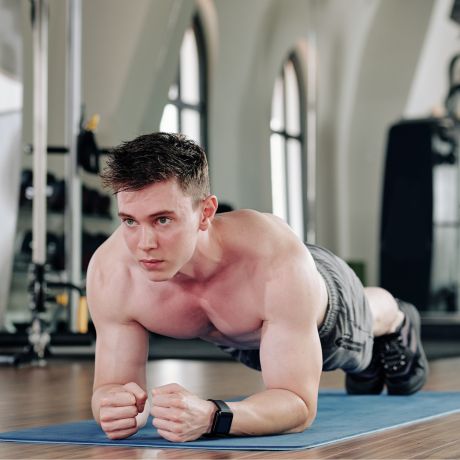
The plank had its day in the sun, but it’s ineffective for muscle growth mainly because it doesn’t provide enough challenge for progressive overload. Unlike lifting weights or using machines that offer resistance, the plank relies on your body weight alone. Sure, you can add weights to your back, but that’s only possible if you train with a partner.
It’s also a stationary exercise, so it doesn’t challenge your muscles through a wide range of motion, a key component of muscle growth. The plank mainly targets endurance and stability.
Since you can’t easily make it more challenging over time by adding weight or resistance, there are better choices than this if you want to build a six-pack. If that’s your goal, you’re better off doing exercises that challenge your muscles with heavier weights through an extended range of motion.
What to do instead: Ab Wheel, Weighted Sit-ups, Decline Sit-ups, Hanging Leg/Knee Raises, Palof Press
6: Landmine T-Bar Row
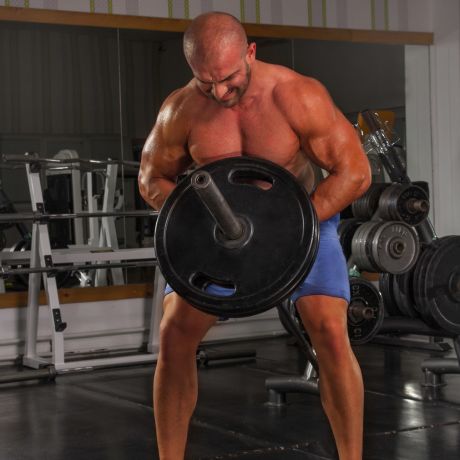
Man, I’m going after the old-school back exercises in this article. I don’t like the Landmine T-bar row for mostly the same reasons as the barbell row. It puts a lot of stress on the lower back, and people often do it wrong, making it a poor choice for muscle growth. However, the Landmine T-bar row also has a limited range of motion, and instability and balance are issues at heavier loads. Look, T-bar rows are not terrible. You could do worse, but better options for back growth exist.
When I was a young buck, I loved these. The T-bar row had a powerful propaganda machine back then. Picture a black-and-white image with one side of a rusty bar shoved into a corner, 45s filling the open end, and a pro bodybuilder in the middle of cranking out reps. Trust me, T-bar rows look badass in a bodybuilding magazine! I did them for years.
But as I got older and wiser, I realized you could get all the benefits without the downsides by using a chest-supported row machine. Do chest-supported rows look as hardcore? No, not at all, but they are more effective, so we will let that detail slide.
What to do instead: Dumbbell Row, Seal Row, Chest Supported Row, Meadows Row, Seated Cable Row
7: Dumbbell Kickback

I debated adding kickbacks to the list. I don’t hate them. In fact, I like the cable variation. That said, the dumbbell variation is overrated.
The most significant issue is the limited time under tension. The dumbbell kickback only challenges the triceps at the top of the movement. At least 50% of the exercise has little tension. More importantly, you can’t go heavy due to the nature of the exercise. There is a limited amount of loading potential. Lastly, it’s hard not to use momentum to move the weight if you try to go heavy. All of this combined equals an ineffective muscle-building exercise.
The cable kickback is a solid exercise. So, if you like dumbbell kickbacks and think I’m an idiot for including them on this list, try the cable variation before sending the hate mail. The cable kickback still has some limitations, but the cable variation challenges the triceps for a much greater range of motion.
Before we move on, I want to point out that new research suggests triceps growth is substantially greater following training performed in the overhead versus neutral arm position.³ What does this mean? You should include at least one exercise with your elbow in an overhead position to get the most out of your triceps training.
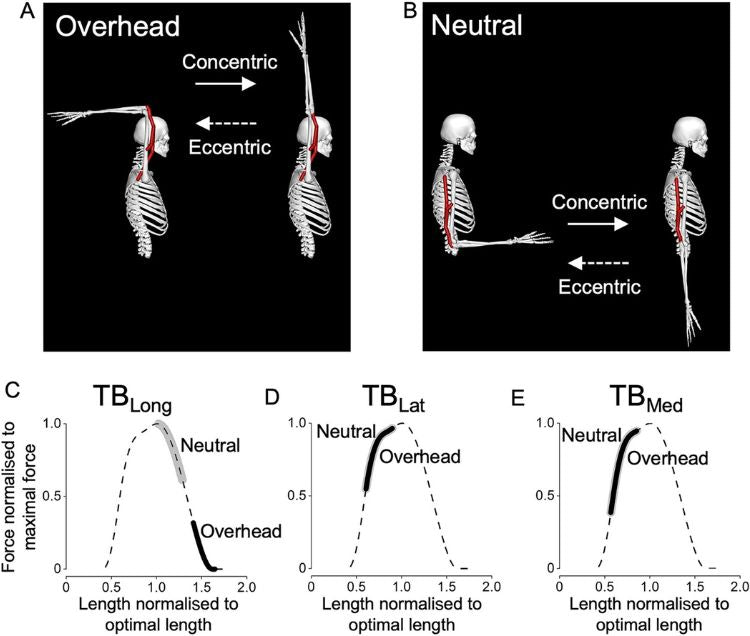
Figure 3: Maeo, S., et.al. (2023)
What to do instead: Cable Kickback, Cable Triceps Pressdown, Overhead Cable Triceps Extension, Overhead Dumbbell Triceps Extension, Lying Triceps Extension, Dips
8: Plate Press
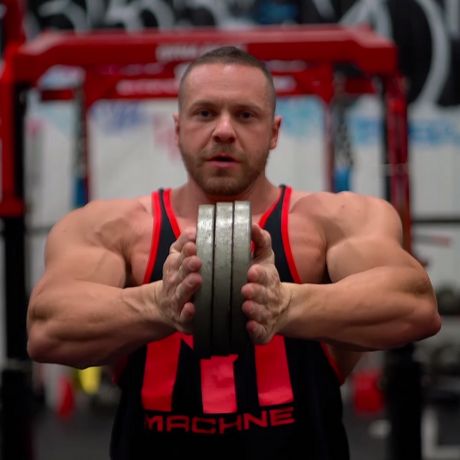
(Image credit to Tiger Fitness on YouTube)
Okay, the gloves are off. I admit some of the exercises on this list are not as bad as I’m making them out to be. However, the plate press is terrible. It’s a joke, and it sucks for muscle growth.
At this point, I wonder if people still do them on social media just for clicks. That has to be it.
If you are unfamiliar with it, a plate press involves holding a weight plate (or several smaller ones) with both hands and pressing it away from the body. The idea is that it works your inner chest. However, a laundry list of problems makes this movement inferior.
For one, there is limited overload potential—the most weight you can use is 45 pounds. Two, it has a short range of motion. Three, it doesn’t stretch the pecs, and four, it feels awkward.
What to do instead: Bench Press, Incline Bench Press, Dumbbell Bench Press, Machine Chest Press, Cable Crossover, Pec Deck, Pushups, Dips, any other chest exercise you can think of.
9: Dumbbell Chest Fly
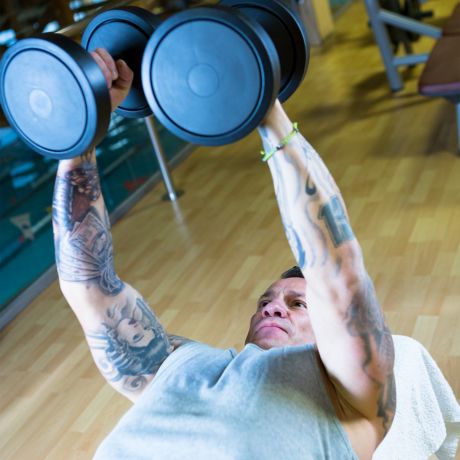
All exercises exist on a continuum from best to worst. While some movements are clearly on the worst side, some, like the dumbbell chest fly, fall in the middle. The dumbbell fly is another classic bodybuilding exercise that falls short compared to other options. Its biggest downfall is that cables and machines exist.
A 2012 study comparing EMG data on various chest exercises found both the peck deck machine and cable crossover exercises created more chest activation than dumbbell flies.?

Figure 4: Schanke, W. (2012)
There is nothing inherently wrong with a dumbbell fly other than cables and machines putting tension on the muscle through a greater range of motion. So, if you include one chest fly variation in your program, you are better off picking a cable or machine than using dumbbells.
What to do instead: Cable Crossover, Pec Deck, Pushups, Dips, Bench Press, Incline Bench Press, Dumbbell Bench Press, Machine Chest Press
10: Above the Knee Rack Pull
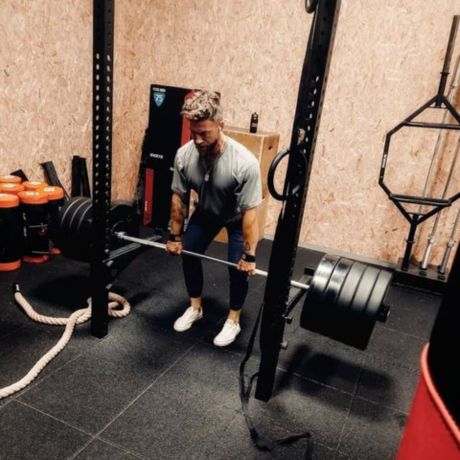
Last but not least: above-the-knee rack pulls. Luckily, I don’t see these done as much anymore. Aside from being a lousy exercise, rack pulls are harsh on gym equipment, too.
Here is the deal. The above-the-knee rack pull sucks for muscle growth mainly because it has a short range of motion. You can load a ton of weight, but your muscles aren’t working through their full range when you only move the bar a short distance. Muscle growth happens best when you challenge your muscles across their entire range of motion.
Plus, you have to think about risk versus reward. The rack pull also poses a higher risk of injury. Since you’re lifting heavier weight than you could handle on a regular deadlift, there’s more strain on your lower back and spine. This strain can increase the likelihood of back pain or even more severe injuries like herniated discs. All for what? There are too many better exercises you can choose from.
What to do instead: Block Deadlifts, Paused Deadlifts, Romanian Deadlifts, Stiff Leg Deadlifts, Good Mornings, Weighted Back Extensions
Three Exercises So Bad They Didn’t Make The List
Although this is a list of the most overrated exercises for muscle growth, a few are so bad that I couldn’t include them.
1: Zercher Squats
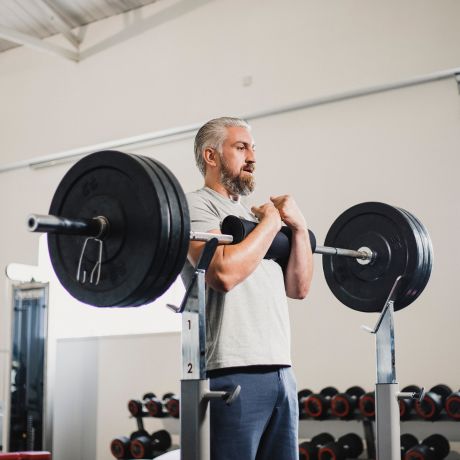
For muscle growth, the Zercher squat is everything wrong with front squats, but to a greater extent. Zercher squats are terrible for muscle growth mainly because they hurt like hell and limit the amount of weight you can lift. Since the barbell goes in the crook of the elbows, it can dig into your skin and cause discomfort, which limits (and distracts) you from using heavy weights. Additionally, the barbell’s position can make it challenging to maintain proper form, potentially increasing the risk of injury.
2: Standing Dumbbell Internal and External Rotations
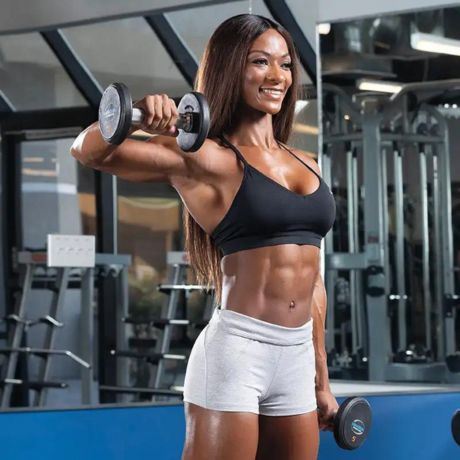
(Image credit to Muscle & Fitness)
No one does these for muscle growth, right? Well, you would be surprised. Standing dumbbell internal and external rotations are among the worst muscle-building exercises. They don’t even stimulate the small shoulder muscles they intend to. One word: gravity. Holding the dumbbells in a hammer curl position and moving the weights in and out, at best, is an isometric biceps exercise. There is no tension on the rotator muscles of the shoulder.
On the other hand, using cables or bands for the same movements can make for a good shoulder warm-up before bench pressing. Unlike dumbbells, you can set up cables and band internal and external rotations with the tension on the intended muscle.
3: Anything on a Bosu Ball

I hope no one performs movements on a Bosu ball for muscle growth. It’s 2024. We know better now. Exercises performed on a Bosu ball are terrible for muscle growth because they prioritize balance over stability and activation. Balancing on unstable surfaces like a Bosu ball can engage stabilizing muscles more than doing them on a regular surface. Still, it reduces the weight or resistance you can use, limiting the stimulus for muscle growth. For this reason, research shows that training on unstable surfaces is a poor option when the goal is to build muscle or strength.?
Conclusion
Well, there you have it—the most overrated exercises for muscle growth. If you want to maximize your time in the gym and make the most gains, avoiding these exercises makes sense. There are too many better options to choose from. Remember, muscle-building exercises should progress easily over time, create high tension, and the target muscle must be the limiting factor. If most of your exercises meet those requirements, you will be well on your way to a more muscular physique.
Do you want a program with all of the best exercises already laid out for you? We created the ultimate hypertrophy program to take your physique to the next level.

Prepare to maximize your gains with our exclusive 12-week hypertrophy training program. Choose between a 4 or 5 day training split and gain 2-12 pounds of muscle over 90 days…
References
- Gullett, Jonathan C; Tillman, Mark D; Gutierrez, Gregory M; Chow, John W. A Biomechanical Comparison of Back and Front Squats in Healthy Trained Individuals. Journal of Strength and Conditioning Research 23(1):p 284-292, January 2009. | DOI: 10.1519/JSC.0b013e31818546bb
- Sweeney, S. P. (2014, May 1). Electromyographic analysis pf the deltoid muscle during various shoulder exercises. Minds.wisconsin.edu. https://minds.wisconsin.edu/handle/1793/70129
- Maeo, S., Wu, Y., Huang, M., Sakurai, H., Kusagawa, Y., Sugiyama, T., Kanehisa, H., & Isaka, T. (2023). Triceps brachii hypertrophy is substantially greater after elbow extension training performed in the overhead versus neutral arm position. European journal of sport science, 23(7), 1240–1250. https://doi.org/10.1080/17461391.2022.2100279
- Schanke, W. (2012, December 1). Electromyographical analysis of the pectoralis major muscle during various chest exercises. Minds.wisconsin.edu. https://minds.wisconsin.edu/handle/1793/62857
- Behm DG, Drinkwater EJ, Willardson JM, Cowley PM; Canadian Society for Exercise Physiology. Canadian Society for Exercise Physiology position stand: The use of instability to train the core in athletic and nonathletic conditioning. Appl Physiol Nutr Metab. 2010 Feb;35(1):109-12. doi: 10.1139/H09-128. PMID: 20130673.





